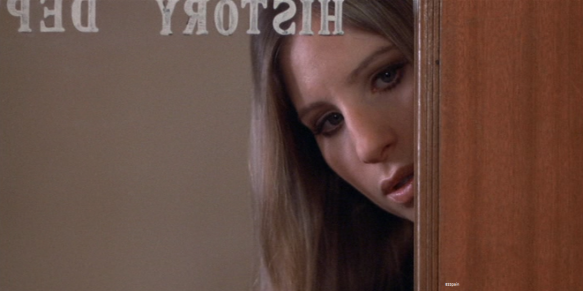I’ve been moving from coast to coast since I graduated university. No matter how many times I’ve moved over the course of my adult life, my journals have followed. Last time I moved they accounted for 4 boxes. Now I suspect it would take up to 8. After some soul searching, I rid myself of all those hand written documents. But I did take a last look at my 25 years of existential scrawling. Over the course of 6 months I reviewed all of my self-reflections. I came to the conclusion that my life took a positive but harrowing turn when I was 8 years old. This turn took place in 1975. My 8 year old self took a determined stand against my father and everything changed. I find it interesting that such a powerful moment in my assertion of self is so eclipsed by art and one profound realization about the world.
I guess I should have known better. I was eight years old, but I was still somehow too innocent. I can remember waiting with anticipation for the arrival of The Sea-Monkey Aquarium package. I know I was eight because I had been working out my plan to get myself into the cinema to see Tommy which was due to open in our town before summer had even begun. It was 1975. Jaws was playing at the movies and Captain & Tennilles’ Love Will Keep Us Together was always on the radio. My Grandmother had helped me place my Sea Monkeys order shortly after Christmas.

“Caricatures shown not intended to depict Artemia”
But no one pointed out the fine print to me! By the way, this image is dated 1978, but I got mine in 1975.
I had carefully cleaned a pickle jar, filled it with water and emptied the contents of my Sea Monkey “seeds” expecting to watch whole families of Amazing Life swimming about. They would me my pets! Not like my father’s mean little poodle that had once upon a time been intended for me. These Sea Monkeys would be my friends and my amazing pets!
I did eventually notice little specs moving about the jar. My Grandmother’s magnifying glass revealed surprisingly little of these highly uninteresting floating things. There was nothing amazing to be seen.
“I think these are brine shrimp.”
I was far too embarrassed to admit that I had expected to see multiple happy families just like the advert promised.
“You didn’t think they were going to look like the cartoon, did you?”
I wanted to say, “Yes, I did.” Instead I said something to the effect that I thought that Sea Monkeys would at least be fun to watch. These lifeless brine shrimp seemed to just float on the top of the water.
I had followed the directions very carefully, but it seemed like the very un-Amazing and practically microscopic brine shrimp were far from being Sea Monkeys. I was also fairly certain they were already dead. A knotted feeling gripped my stomach as I poured the contents of my pickle jar into the toilet and flushed. Sea Monkeys had only yielded disappointment. Yet there were far darker realizations that took place in my 8th year of life. However the true realizations were obscured by memories of movies and music.
My father was crazy. I am sure some who read this will think I’m exaggerating but the dude was nuts.
The man who put me through hell was buried six feet under a long while ago. I always thought his absence would bring me peace, but the truth is there are only more things I wish I could say to him. Only more questions I would like to ask. I doubt I would, but it would be nice to have the opportunity.
I do miss him. It would be a massive understatement to write that he had a twisted sense of humor. He was a complete character and a mound of eccentricities balanced on cowboy boots. While almost everything he left me has caused pain, he did gift me with the love of movies. It was a gift delivered in a sadistic manner, but I credit him all the same.

“Take a trip into terror!”
One of many amazing films I saw on the adult side of our town’s Drive-In. I saw this there in 1975.
SISTERS
Brian De Palma, 1973
My father had no true sense of the appropriate. Not too long after I drew my line in the sand, he began to take me with him to the movies. He either had no sense or did not care about the content of a movie being inappropriate for a child and movie rating restrictions were always ignored. My mother did not like going to movies much and he did not like going alone. I think I became his movie pal. I sometimes wonder if this all wasn’t possibly an intentional toe over my blood marked line.
It was made clear that I was never to discuss the movies we saw with my mother or Grandmother. Most of these screenings were framed within the context of a shared secret. I did not mind. In fact, I loved going to the movies. Like any kid, I especially loved being able to see the movies that were forbidden to my school friends. My mother would have never allowed me to see most of these movies. However by the time I was 10 years old, she wasn’t too restrictive with me regarding movies. Her concern regarding the warning of the movie rating system seemed to only flare when a film contained a lot of sex. However if I articulated the desire to see a movie I could usually secure her buy in.

“Take her to the prom. I dare you!”
Released in 1976, but I saw it in 1977.
CARRIE
Brian De Palma, 1976
By 1977 my mother’s own situation had become quite complex. I suspect it was a bit of a relief to drop me off to see Saturday Night Fever or The Rose. I would usually end up alone at the two screened cinema and would end up sneaking in to see the move playing in the other cinema. This was how I saw Carrie in addition to Network. I know that my mother would have been very concerned had she been aware. Most especially when I was 8 or 9. Actually she would have been very concerned when I was 10. I just don’t think she had the time or the emotional ability to be to actually question or be aware. However, that is another topic. The only self-aware problem I encountered with our Father/Son movie outings was that I quite often did not understand much of what we saw. And he was never interested in explaining anything.
Back in the 1970’s movies never really seemed to have gone out of distribution. It is my impression that distributors just kept a lot of them in circulation to not only Grindhouse cinemas and Drive-In’s, but in pretty much all movie houses outside of major cities across the Americas. I remember thinking that the poster for the other two movies on the first screen looked more interesting, but we were not seeing those. My father considered the two that interested me to be dull. I usually fell asleep by the time the second feature began anyway. I remember Sisters fairly well. The whole movie confused me from beginning to end. It would be years later before I finally saw it as a young teen on VHS.
Like many of the movies we saw, they drifted through my head in confusing ways. Did that really happen in the movie? Why was she taking her clothes off in front of a guy? Was she blind? Were there two of her? Why did the other lady seem to be one of them? It would be well into the 80’s before these questions were answered.

I’m certain I was not the only child to be taken to see this. Swimming at the beach or even in pools would never be the same.
JAWS
Steven Spielberg, 1975
We saw Jaws as a family unit. I saw the giant shark movie with my parents in our town’s nicer cinema. It was a shared terrifying experience. Unlike many of the movies I saw, most of my friends saw Jaws as well. It wasn’t just because I was a kid that this movie altered my perception of Fun-In-The-Sun. I think this film impacted culture ’round the world. Going for a swim would never be the same. The only fears that seemed to be unique to me was that I was convinced that my father had rigged our toilet and bathtub to drop me into The Gulf where sharks waited to kill me in the most painful ways possible.
Like a lot of kids, I was obsessed with Jaws and I taught myself to draw the iconic poster image. I don’t think I’m dreaming — we had a single of this movie’s theme song and I played that 45 rpm a lot! Unlike most of the kids I knew, my obsession came to end when I learned of another movie that was promoted as Coming Soon.
It was a movie that somehow captured my entire being.
I am fairly certain I become aware of Ken Russell’s Tommy because of preview I saw at the Drive-In and some odd photographs I noticed in my Grandmother’s copy of People Magazine. I remember knowing that it was Ann-Margret was on the cover. I am so certain of this that I would swear in a court of law. I recall a mention of it regarding Elton John on one of my Grandmother’s favorite talk shows. Did I see that on Dinah! or The Michael Douglas Show? Of this I am unsure, but one thing is solidly real: I had never seen or heard anything quite Tommy the movie. It just looked so incredibly cool and strange to me. And I knew the lyrics to Elton John’s version of Pinball Wizard within hours of having heard it on the radio.

“But I ain’t seen nothing like him in any amusement hall. That deaf, dumb and blind kid sure plays a mean pinball!”
Note: I have never seen this particular single. I found it on The Internet!
Elton John
Pinball Wizard Limited Edition 7″ single, 1975
I immediately received push-back from all three of the adults in my life. Not even my father was willing to take me to see Tommy. And even though my mother had a couple of Elton John 8-Track Tapes and a Who LP, she was not interested and didn’t felt it unsuitable for a child to see. Initially she could not understand why I would even want to see it.
“I just don’t understand why you like that Streisand lady, this weird movie or that ugly Patti Smith band!”
My father dismissed my request because it looked like “hippie shit.” I attempted to lie and claimed that Ann-Margret was probably “totally naked!” in it. This did not change his opinion. What is interesting is that my longest pitch to my father was delivered as he parked his mammoth car in the field of the Drive-In to see one of the most notoriously shocking movies of the day.
We saw The Exorcist and a second “weird” movie called Beyond The Door. The lady inside the ticket booth saw me at me seated in the car. She asked my father if he knew that these were R-rated movies and not intended for children. He told her to calm down sell him the ticket. I was curious why we were seeing The Exorcist as I knew that he and Mom had seen it before. It had really bothered my mother and he hadn’t seemed all that impressed. The only answer I got was that he liked the movie. I remember being excited to see something I had heard so many people discuss. I had also been fascinated by the cover of my parents’ copy of the novel.
I am not trying to defend my father’s taking me to see these two movies, but neither of these movie bothered or scared me as a child. My understanding of religion was somewhat limited. I had seen a crucifix, but at that time in my life I really did not fully understand what it was. My mother had given me a tiny bible when I was about 5 years old, but Jesus looked like a number of cool rock stars. I had been taught to say a prayer before I went to sleep, but this was a perfunctory requirement. I knew the story of Easter and Christmas, but neither meant anything to me. I just liked the candy and wished for certain gifts. Anyway, the only scene in The Exorcist that freaked me out was when Linda Blair began to spout profanity and repeatedly “stabbed” herself with a crucifix. I wasn’t sure what to call the cross with Jesus on it. I do not think I really understood what it was. While I did have an understanding of human genitalia, I obviously did not fully grasp it.
“What is she doing?”
“Why isn’t she dead?”
“Is that the same kid?”
“What is that she is stabbing herself with?”
“How can she spin her head all the way around?”
“Is it making the furniture move?”
I do not remember my father answering any of my questions. I do know that he was very quiet for the entirety of movie. As per usual he left the car a couple of times. Was he going to use a bathroom? He seemed like a zombie throughout both screenings.
I remember thinking he was asleep during Beyond The Door. But he wasn’t snoring and when I poked him he turned to me and said I needed to shut up and leave him alone. The only thing I recall about Beyond The Door is the poster. I did think it looked promising. It still amuses me as an adult. The poster that is. I think the scariest aspect these two movies at that time was the music used in both and the way my father was acting throughout each of them. From an adult perspective the latter was easily the more worrying concern. And I do recall that it was a creepy drive home. It must have been because I still remember it so well.
My world began to open around this time. I had long been attempting to assert my own tastes, but it was 1975 I began to embrace mainstream culture as my own. When my older cousin introduced me to Led Zeppelin, Fleetwood Mac and Grand Funk — I loved what I heard. It was at this time that the idea of a band being called Grand Funk seemed so grown-up and cool. I know it wasn’t a new song at the time, but I took great pride when I selected this single as my father purchased a Willie Nelson album. Upon reflection his purchase was wiser, but I still enjoy the groove of Grand Funk’s take on The Loco-Motion.

“Everybody’s doing a brand-new dance, now…”
My first 45 rpm single!
The Loco Motion
Grand Funk, 1974
My mother liked popular music and she was already leaning into what seems like disco. I liked that stuff as well. I don’t know if it was actually called disco, but ABBA and The O’Jays seemed cool to me. Though, when I compared LP or 8-Track Tape covers, ABBA, The O’Jays and The Captain & Tennille did not look or sound nearly as cool as Grand Funk, Led Zeppelin or The Who.
Our neighbor had a daughter who was 4 years my senior. I thought her the ultimate in cool for a long time. I drove her crazy, but I suspect I also made her feel important. She would “borrow” record albums from her older siblings. One afternoon I was boasting of owning the Grand Funk single when she told me to wait a few minutes. She left me leaning on a tree, but she returned with an album that totally zapped me into a whole new universe.
Who’s Next sounded completely alien to anything I had ever heard at that point. The music felt like hard rock but it had a booming sort of wired sound. The lead singer sang as if every lyric meant everything to him. And the cover seemed so “dirty” that I agreed with my neighbor.
The Who were far cooler than Grand Funk. In fact they were even cooler than Queen who I had only just discovered. It would be a while before I actually owned the Who’s Next album.
It was also my cool neighbor who saw Tommy on its opening night. She explained the movie to me scene by scene. I was mesmerized by the idea of Elton John in giant shoes, a TV that spewed Pork & Beans and Tina Turner injecting Tommy with new blood.
(this was how she explained it)
I put my campaign to see Tommy into full running force. It was literally all I talked about when I was around my family unit. My father ignored me. My mother begged me to stop. My Grandmother said that she would take me if only my mother would allow her. (Um, my Grandmother’s comment was not true. She just liked to blame all bad things on my poor, confused and often unplugged mother)
The following weekend after my 12 year old neighbor had laid out the entire plot of Tommy I found myself alone in the car at the Drive-In.
When my father returned to the car he handed me a soda. I had been plugging away with my “I must see Tommy!” assault. I started into it again as the previews began.
“That is not the kind of movie that a son of mine should see!”
Cue the first reel of Ilsa: She-Wolf of the SS. I was not frightened by what I saw but I was most certainly shocked. I am not positive that this was an X-rated movie, but it should have been. I had seen violent films, but this one took things to a whole new level. I knew more about Nazis than a crucifix. Nazis were more than just bad, they were evil. And Ilsa was really bad!
I should point out that I have never been able to look away from anything on a screen once a scene starts. I am compelled to watch.
I would not have known the words “fetish” or “grindhouse” but this was most certainly Nazi Torture Porn playing to the lowest human denominator. I don’t know, maybe it would seem camp to me now, but back then I was shocked. I’ve avoided ever seeing this movie again.
My father’s eyes never left the screen except for when he would leave the car. It is probably better that I never figured out what he was doing when he left our car. But he was once again like a zombie. I remember thinking that I should point out that I didn’t think Tommy was as dirty as Ilsa: She-Wolf of the SS but my gut warned me not to speak as we drove home.

You know, I’d swear her copy was on an orange tape…
“Well you came and you gave without taking.”
Barry Manilow II
By this time Tommy had been playing for close to 3 weeks. It was a hit. Back then movies seldom played in my town for more than two weeks. It had been held over for 4 weeks! My mother was wearing down. She agreed to buy me the soundtrack album – a 2 LP set with a gate fold cover!!!
We drove to a record store. I roamed all over looking for my 2 LP set. I was having no luck. Mom approached carrying her planned purchase: an 8 Track Tape of a Barry Manilow album that contained a song she liked. She consulted with the guy at the counter: they only had the Tommy soundtrack on 8 Track Tape. That was not going to work. I had to have the album in LP format with the gate fold art!
Exasperated she called me a spoiled brat, bought her tape and didn’t speak to me until Barry had finished crooning “Mandy” which amazingly was not broken apart by one of the 4 channels of the tape. (8-Track-Tapes were really strange!)
We were already almost home when she told me that we would go to the mall the next day if I would stop talking about the movie.
Maybe I was a spoiled brat. I told her that she had to take me to get the record and that I couldn’t stop talking about the movie unless she took me to see it. She gave in and turned the car around bound for K-Mart. They had the album. At least the first part of the battle was won!

“Well, I’d certainly say she had marvelous judgment, Albert, if not particularly good taste.”
Don Johnson and his talking dog
A Boy and His Dog
L.Q. Jones, 1975
Cinematography | John Arthur Morrill
I was not taken to see Benji like my other friends. For that matter I didn’t get to see The Apple Dumpling Gang. However I was always the coolest kid at school because I got to see the movies that the other kids could only think about! The downside was that some of these movies were simply unknown to the other kids and I couldn’t even articulate what I had seen. I did get to see a movie that featured a cute dog, but A Man and His Dog was one of those movies that made no sense to my child brain. I had a hard time following this film. My father did point something out to me what I didn’t catch on my own: the boy and his dog ate the girl.
The second feature on this double bill was the only movie that actually upset me: The Last House on the Left.
I should have been too young to understand much of what was going down on the screen, but this time I did understand. As per usual, my father was dazed out — but this time I was terrified.
I do not remember the ride home. It would take me a couple of decades to revisit Wes Craven’s notorious film.

“I thought you were supposed to be the love generation.”
The Last House on the Left
Wes Craven, 1972
Cinematography | Victor Hurwitz
It would be a long time before I made any connection to why Tommy and the respective soundtrack album resonated so deeply for me. It was all I listened to at this time in my life. I loved side 2 on record 1 the most. By this time we were headed to summer. It was getting really hot. My father took me to a twin cinema instead of the Drive-In. We saw Hal Ashby’s Shampoo.
Yet another film I failed to understand. It is funny thinking back to this as Shampoo a movie with which I’ve had to spend a good deal of time. I love it now, but at 8 years old I just wanted to be sure I understood what a “cock” was and why did the pretty lady want to suck one. My question caused a spasm of laughter throughout the cinema. It also led to a well-intentioned woman attempting to lecture my father for having taken a “little boy” to “such a movie.”

What is that and why does she want to suck it?
Julie Christie and Warren Beatty
Shampoo
Hal Ashby, 1975
Cinematography | Laszlo Kovacs
He had to stop and let her correct him. He was a polite, “Well Lady, you are here seeing it so I guess it can’t be that bad?”
As for me I had moved to the other side of the cinema’s lobby. I was studying the poster for movie that was playing in Cinema One. The strange doubled image of Roger Daltrey wearing the Blind Deaf & Dumb contraption was like a beacon to me. I could hear Jack Nicholson attempting to sing as I looked. Before we had even reached the car I was advised I would not be seeing “that fucking movie!”
Just two days before it closed I did get to see Tommy.

“Gather your wits and hold on fast,
Your mind must learn to roam.”
Tina Turner is The Acid Queen
TOMMY
Ken Russell, 1975
Cinematography | Dick Bush

Drugs as a way to escape the pain.
“I’ll tear your soul apart…”
Roger Daltrey
TOMMY
Ken Russell, 1975
Cinematography | Dick Bush

The coolest platform shoes on record…
Elton John is The Pinball Wizard
TOMMY
Ken Russell, 1975
Cinematography | Dick Bush

Tommy studies his splintered selves as his mother worries and his step father calculates things to his advantage.
Ann-Margret, Roger Daltrey and Oliver Reed
TOMMY
Ken Russell, 1975
Cinematography | Dick Bush
I finally got to see the movie thanks to my mother. I didn’t really understand all that I saw.
Why was his mother working with all those women? What is a “Holiday Camp?” Is that like a Marilyn Monroe church? Why is Tina Turner taking out blood and shooting more in? What is a “Pinball Wizard” anyway? Why do all those people want to be “Blind, Deaf and Dumb?”
I did understand a couple of things. I understood that Tommy was trapped. I understood that he was trying to escape pain. I understood what Uncle Ernie was doing — and I was relieved it was treated comically. Interestingly, I did not connect the film to myself. That understanding would dawn much later. But the great music, camera work and consistently strange set designs took hold of me from first image and sound until the end credit cards hit the screen.
Tommy was completely unique to anything I had ever seen. The same was true for the rest of the audience.
Even in a small Texas town, the kids were totally into what Ken Russell was showing. My neighbor pointed out that her boyfriend had gotten stoned and watched it four times. I wasn’t sure I understood what she was talking about, but there was a strange aroma coming from a few odd cigarettes being shared in the audience.
But all of this aside, it is interesting how strongly this move held me in its grip. This was my Star Wars. This film was speaking to me.
Not too long after I finally saw Tommy, my father took me to another movie. There was a big movie theatre in our town to which we seldom went. It was not in the best part of our town though it was fairly close to the college. It tended to get older movies that were probably too sophisticated for my father’s taste. He would end up taking me to see three movies there. The first movie we saw there was in 1975. The other two we would see there would be during the period my parents were divorced. Those two movies were also wildly inappropriate for a child to see: Dressed To Kill and Cruising.
But in 1975 my father was swayed to another rock musical staring The Who’s Roger Daltrey: Lisztomania.
The reason he was swayed? A Playboy Magazine pictorial promoting the movie as an erotic filled fantasy. Of course this would propel my father to take his 8 year old child to see it. I was thrilled and excited to see Lisztomania. I was already becoming a bit of cinephile. I recognized Ken Russell’s name. I saw that the movie poster referenced Tommy. And I also recognized Ringo Starr and Rick Wakemans’ names.
I doubt I would have even known about this movie if my father had not taken me to see it. I had seen the soundtrack LP, but had not been able to get near enough to understand what it was. I had recognized Roger Daltrey on its cover, but I don’t think I was aware that it was a movie soundtrack.
I used to study the movie section of the city newspaper. I remember that Lisztomania closed after 3 days. I didn’t understand it was based on historical facts. I had not heard of Franz Liszt. I knew of the Pope, but I didn’t really understand what he did. I was fascinated by the film’s visuals and the strange mix of music. I knew who Hitler was, but I didn’t understand why he showed up. The whole movie was like a dirty cartoon. I loved it. And I wanted Roger Daltrey’s boots.
As we left the theater my father was not zombie like at all. He was annoyed. I tried to ask him some questions, but all he wanted to do was complain about “hippie bullshit” and that there “was no sexy stuff” in it. As he drove onto the highway I did ask him something that was bothering me:
“Why was it OK for me to see that but not OK for me to see Tommy?”
To my surprise he actually answered me.
“I didn’t want to see Tommy.”

“That deaf, dumb and blind kid sure plays a mean pinball.”
Elton John
TOMMY
Ken Russell, 1975
Cinematography | Dick Bush
I owe my knowledge and love of cinema to my father, but it was at this moment that I realized it was never about me. These were not movies we were seeing together — these were movies he wanted to see and I was being taken along for the ride. Ten years later he asked me to go to Houston with him to see a movie. I agreed. Turned out it was a foreign film I had wanted to see. He slept through the entire film. I found it somehow touching that he was attempting to somehow connect with me by taking me to see a movie I wanted to see. As we left the cinema I was about to thank him when it turned out we were actually in Houston so he could meet up with a seller regarding some guns he wanted to buy. I was needed to load the car and figured a movie was a good way to kill time and avoid rush hour traffic.
“Glad you wanted to see it, though. I didn’t much care for it.”
Perhaps I owe more credit to my love of film and my endless pursuit to understand the whole “picture” to Ken Russell. It was Lisztomania that propelled me to look into classical music and history. Tommy had also led me to find more of his films once the age of VHS began. I read interviews with Mr. Russell that pointed me toward other filmmakers like John Ford, Nicolas Roeg and others. But I would have never been connected to the world of movies had it not been for my insane father.

Do you think it’s alright?
Roger Daltrey and Ann-Margret search for saving grace…
TOMMY
Ken Russell, 1975
Cinematography | Dick Bush
I destroyed the last of my journals yesterday. As I watched them denigrate I was brought back to the moment I flushed the disappointment of Sea Monkeys away. After the water had pushed the brine shrimp from my life, I took the empty pickle jar for a walk past our back yard. I raced down and up the other side of the ditch to the railroad tracks. I sat the pickle jar on a track. I ran down and back up to return to our side of the ditch. I crouched down and waited for the train. When is sped by the pickle jar was smashed into thousands of glass pieces.
A dream was crushed that would require me to wear my flip-flops instead of going barefoot for a long while. The promise of Sea Monkeys was hollow, but the idea of them was still pretty fucking cool.
Matty Stanfield, 5.21.2016












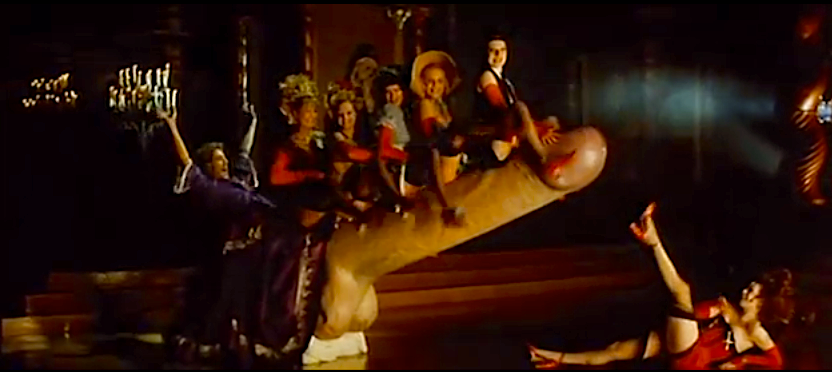



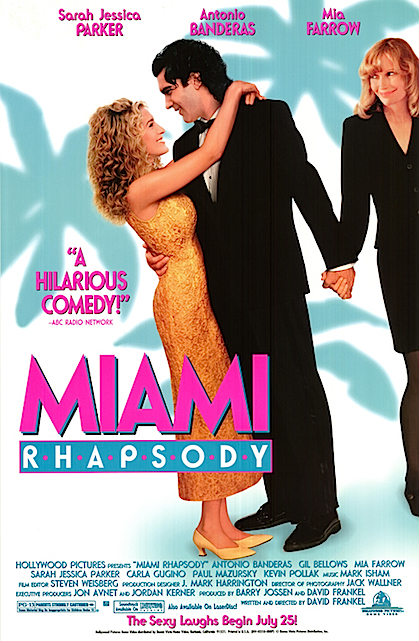
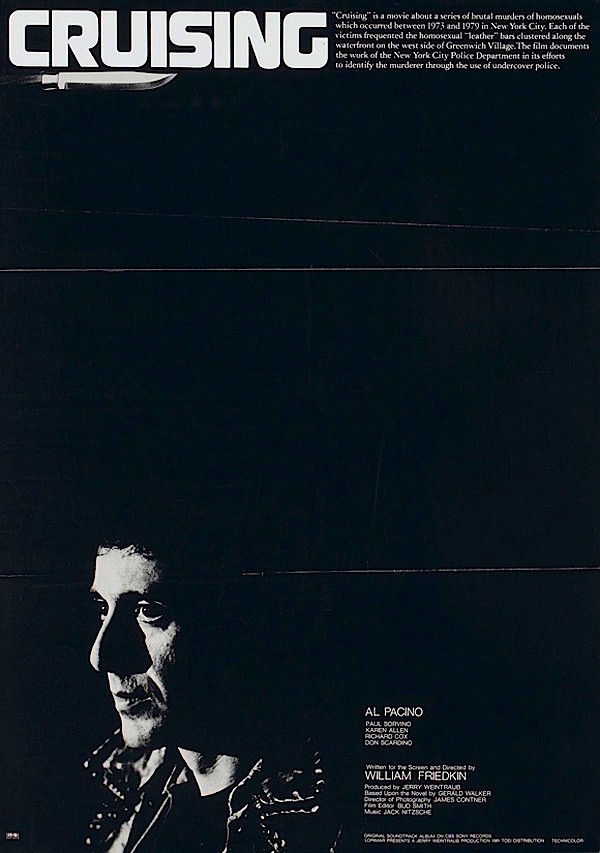


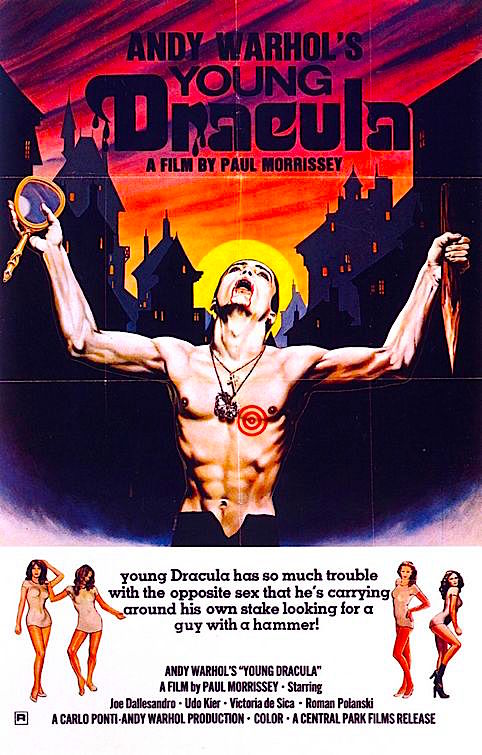




















!["You wanna fuck?" Well, yes, Mr. [insert name here] is "totally OK" to take Carrie Fisher up on her offer. Shampoo Hal Ashby, 1975 Cinematography | László Kovács](https://mattystanfield.wordpress.com/wp-content/uploads/2015/07/carrie-carrie-fisher-34047476-600-400.jpg?w=922)











































